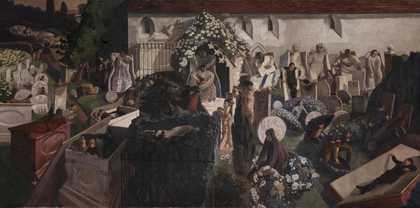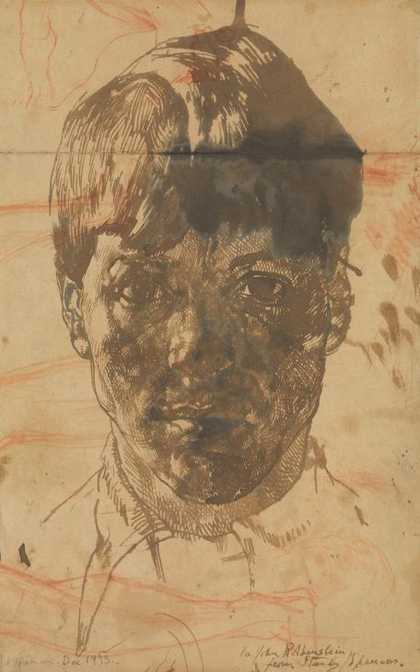
Sir Stanley Spencer
The Resurrection, Cookham (1924–7)
Tate
In the years up to 1922, feeling very happy and inspired, Stanley Spencer painted when he felt moved to do so, his pictures not belonging to any particular scheme.
Then followed the Resurrection: Cookham and the Burghclere paintings.
While working on these, he was thinking over ideas for further pictures, everything showing a schematic relationship; and this led to the plan for a second chapel with scenes of peace centred round the village of Cookham. As he was unable to devote a large part of his time to this cycle, he decided to paint excerpts, and he began in 1933 to paint pictures from the ‘Pentecost’ scheme (Sarah Tubb and the Heavenly Visitors, Villagers and Saints, Separating Fighting Swans), in which saints and angels visit Cookham, making trips round the village and performing various acts of a benevolent kind.
Then in 1935 he began another scheme from the cycle, the ‘Cana’ scheme, in which he tried to show the importance of everyday actions.
He called this the ‘Cana’ scheme because the idea originated while he was working on a picture of The Marriage at Cana in which women handling the trousseau played a major part. Dusting Shelves, Workmen in the House and Love among the Nations are included in the exhibition: he stresses the value of friendliness and love.
In 1936 this scheme seemed to change into a ‘Couple’ painting scheme and became wilder and more mannered, with growing emphasis on the sexual aspects of love (Promenade of Women and Beatitudes of Love), but still conceived as part of the original cycle. The ‘Couple’ period closed in 1938.
In 1939 he began the Christ in the Wilderness series, which was entirely independent of the chapel cycle and in 1940 the paintings of Shipbuilding on the Clyde commissioned by the War Artists’ Advisory Committee.
The Cookham Regatta series, on which he has been working since 1952, is a river-aisle fragment of the chapel cycle.

